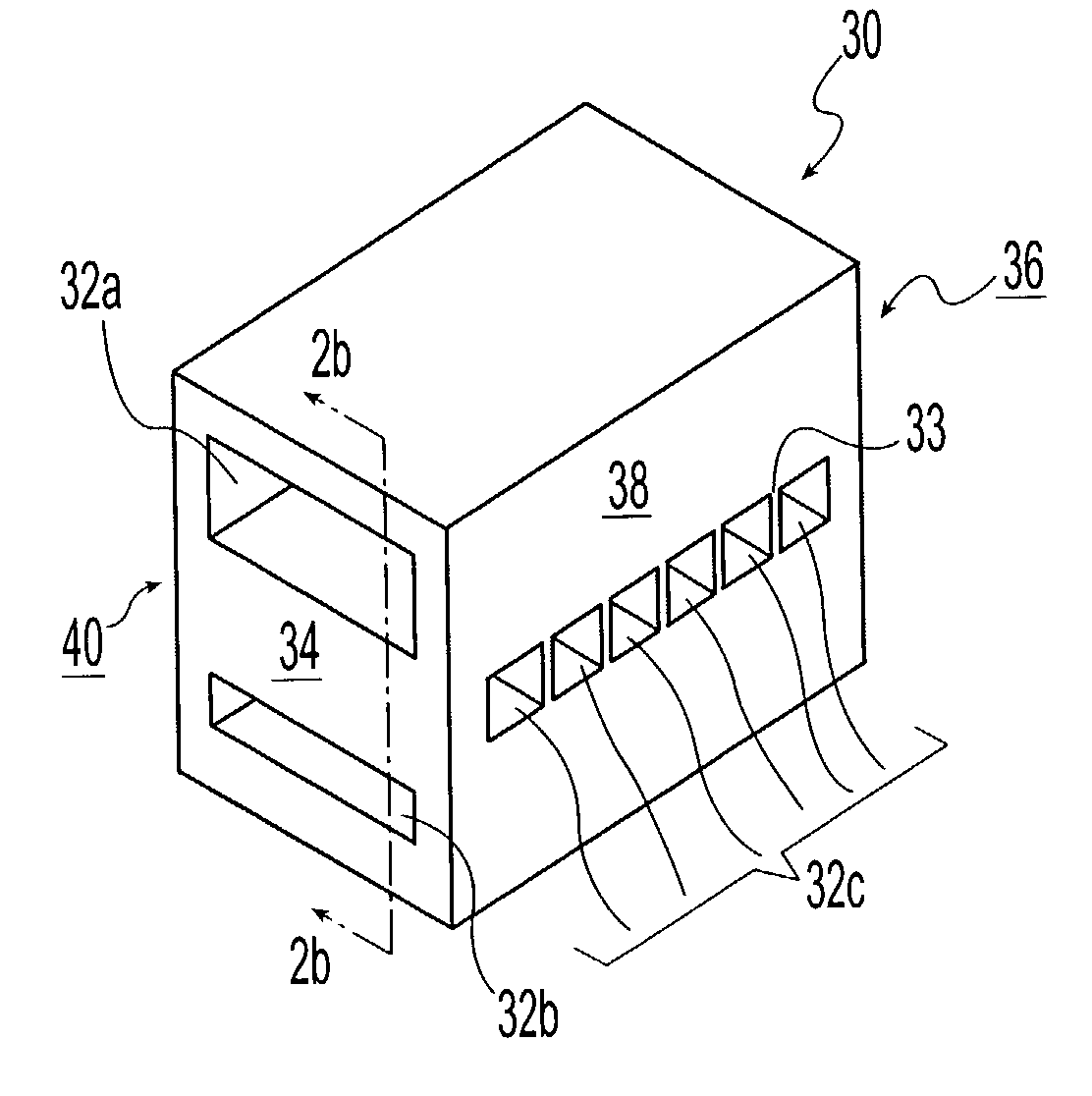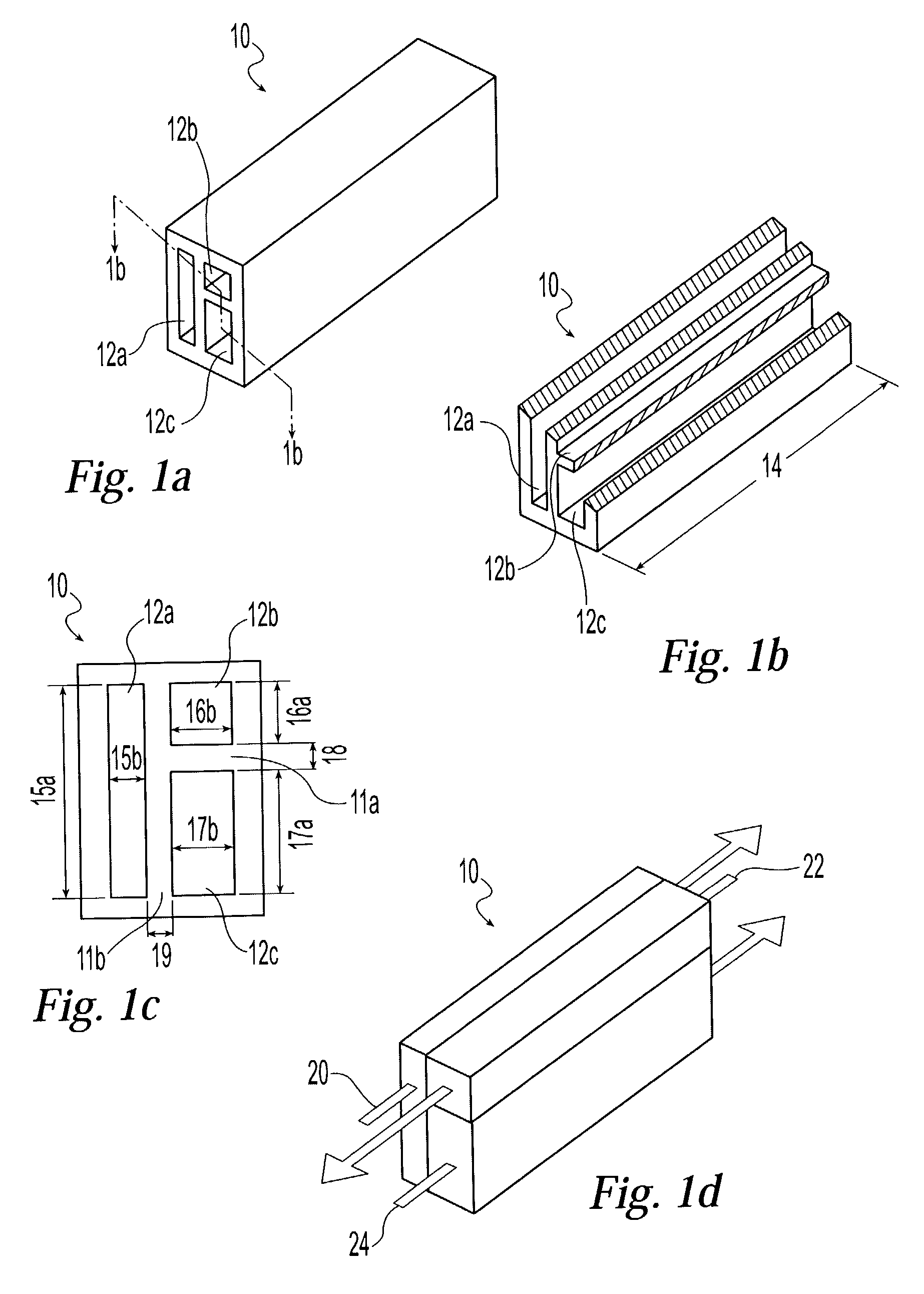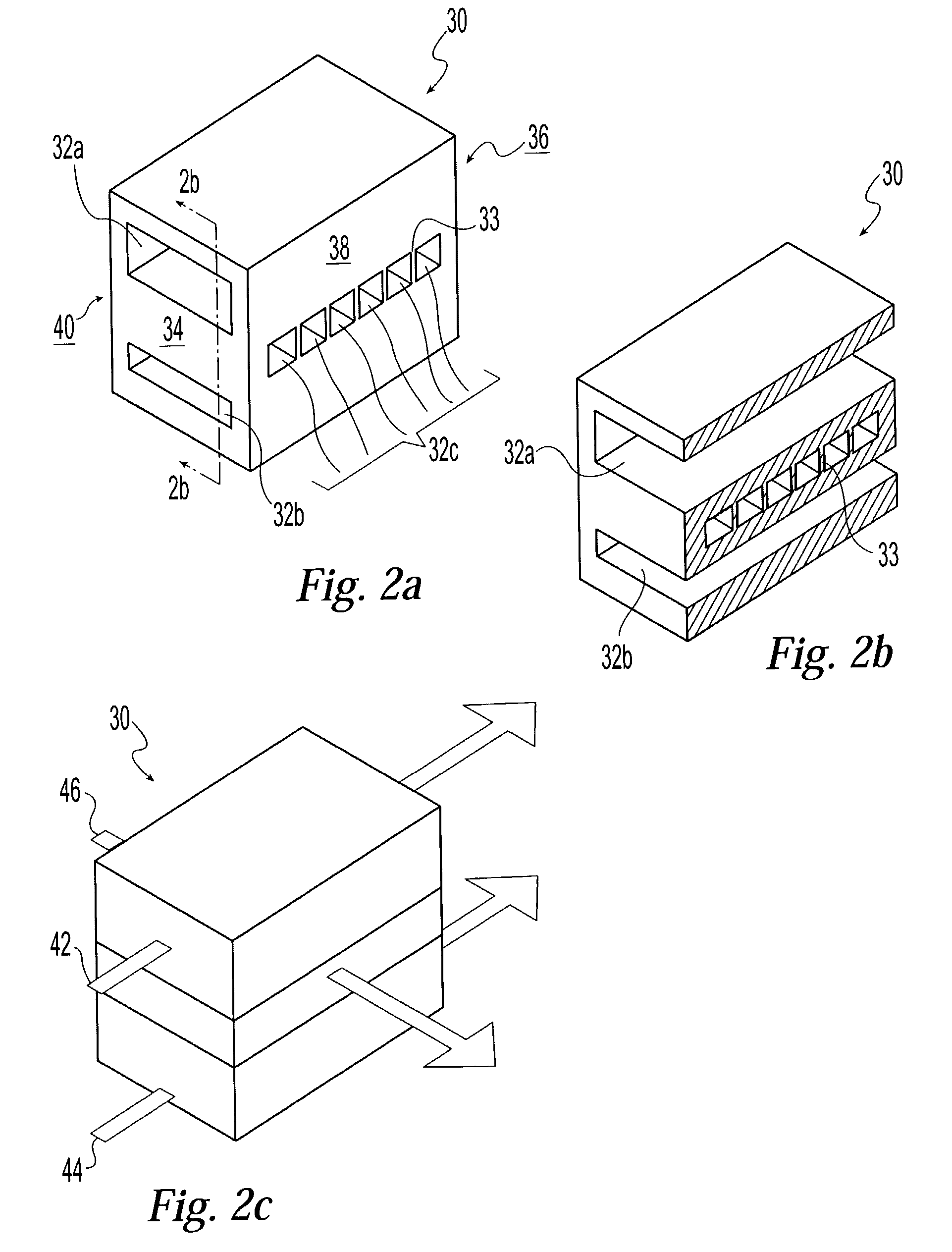Multi-stream microchannel device
a microchannel device and multi-stream technology, applied in lighting and heating apparatus, physical/chemical process catalysts, bulk chemical production, etc., can solve the problems of insufficient design of mct heat exchangers, and inability to meet the needs of industrial production
- Summary
- Abstract
- Description
- Claims
- Application Information
AI Technical Summary
Benefits of technology
Problems solved by technology
Method used
Image
Examples
example 1
[0175]Referring now to FIGS. 10–15, a heat exchanger was specifically designed to simulate a heat exchanger according to one embodiment of the present invention. The heat exchanger used five distinct fluids, denoted in FIGS. 10–15 as Fluids A, B, C, D, and E. Fluids C and D were split into two streams each with each stream flowing through separate microchannels; fluids A, B, and E each flowed through separate microchannels (as Streams A, B, and E, respectively), making a total of seven microchannels in the heat exchanger. As shown in FIG. 10, Fluid C flowed through two microchannels as Stream C1 and Stream C2. Similarly, Fluid D flowed through two microchannels as Stream D1 and D2. The experimental results show the performance of the heat exchanger and the results as compared to numerical simulations from a computer program.
[0176]Referring again to FIG. 10, the heat exchanger consisted of seven rectangular microchannels, each ten inches (in.) long. The height of each microchannel wh...
PUM
| Property | Measurement | Unit |
|---|---|---|
| height | aaaaa | aaaaa |
| height | aaaaa | aaaaa |
| height | aaaaa | aaaaa |
Abstract
Description
Claims
Application Information
 Login to View More
Login to View More - R&D
- Intellectual Property
- Life Sciences
- Materials
- Tech Scout
- Unparalleled Data Quality
- Higher Quality Content
- 60% Fewer Hallucinations
Browse by: Latest US Patents, China's latest patents, Technical Efficacy Thesaurus, Application Domain, Technology Topic, Popular Technical Reports.
© 2025 PatSnap. All rights reserved.Legal|Privacy policy|Modern Slavery Act Transparency Statement|Sitemap|About US| Contact US: help@patsnap.com



